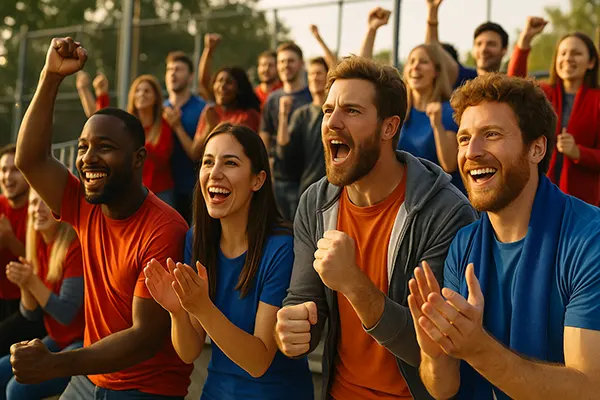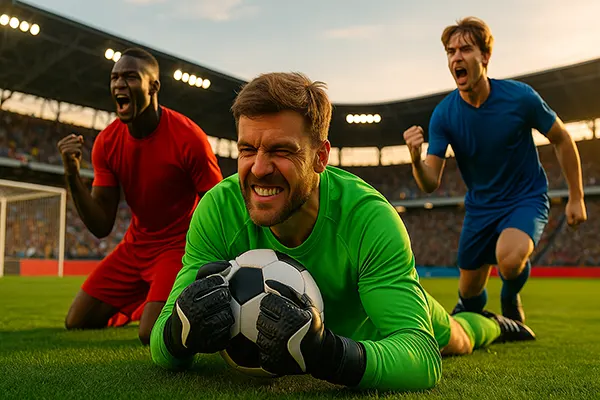
Local Sports Communities as a Marketing Tool: How Brands Leverage Fan Groups on a Local Level
Local sports communities often remain underutilised by large brands, despite their high level of engagement and potential for impactful marketing. In February 2025, the role of local sports communities has become increasingly relevant, especially as brands aim to establish genuine connections with their audiences. While many brands focus on national or global campaigns, tapping into local fan groups can yield remarkable results.
How Local Sports Clubs and Communities Help Brands Achieve Greater Reach
Local sports clubs and communities provide brands with a unique opportunity to reach highly engaged audiences. These groups are often deeply rooted in their local areas, fostering a sense of pride and loyalty among members. By associating with these communities, brands can gain the trust of local consumers, which is crucial for long-term customer relationships.
One of the key advantages of partnering with local sports communities is the ability to leverage authentic storytelling. Brands can share the personal stories of fans, athletes, and community leaders, creating content that resonates on an emotional level. This type of content often outperforms generic marketing messages, as it feels more relatable and human.
Additionally, local sports partnerships allow brands to create experiential marketing campaigns. Whether sponsoring a local tournament or hosting a community event, these activities provide memorable interactions that strengthen brand loyalty. Furthermore, such initiatives often generate organic social media content, amplifying the campaign’s reach without substantial investment.
Successful Local Campaigns: Real-Life Examples
One notable example of a successful local campaign is Nike’s collaboration with community football clubs in Manchester. The brand provided equipment and hosted training sessions, fostering a strong connection with young athletes and their families. As a result, Nike saw increased brand affinity and local engagement.
Another inspiring case is Coca-Cola’s sponsorship of local cricket clubs in India. By creating community-focused advertising and supporting grassroots events, Coca-Cola not only increased its visibility but also positioned itself as a supporter of local talent.
Similarly, Adidas has actively partnered with running clubs across Europe, providing branded gear and facilitating local marathons. This strategy has helped Adidas maintain a loyal customer base while promoting an active lifestyle aligned with its brand values.
Integrating Local Content into Global Campaigns
One of the challenges brands face when leveraging local communities is integrating local content into broader campaigns. However, the solution lies in maintaining a consistent brand narrative while highlighting regional uniqueness. Brands like Red Bull have excelled at this by incorporating local sports stories into their global media channels.
By presenting local events through the lens of a global brand, companies can create content that feels both familiar and unique. For instance, featuring a local sports hero in a global campaign can build a connection with local audiences while also appealing to international fans.
It is also vital to ensure that localised content aligns with the brand’s core message. This coherence helps maintain brand integrity while celebrating community diversity. Leveraging local influencers can also bridge the gap between global strategy and regional relevance.
Best Practices for Using Local Content Globally
Firstly, brands should prioritise collaboration with local experts who understand the cultural nuances of the community. This approach prevents potential cultural missteps and ensures content authenticity.
Secondly, co-creating content with local sports figures or community leaders enhances credibility. These partnerships add a layer of trust and make the campaign feel less corporate.
Finally, brands should invest in monitoring local reactions and feedback. Analysing social media interactions can help refine strategies, ensuring that the local-global blend remains effective and well-received.

The Long-Term Impact of Local Sports Marketing
Investing in local sports communities is not just about short-term visibility; it is a strategy that fosters lasting loyalty. Brands that consistently support grassroots initiatives often become synonymous with community spirit and support.
Moreover, integrating local stories into global branding allows companies to build a more resilient identity. Consumers appreciate brands that value their heritage and actively contribute to the growth of local talent.
By being present at community events and sponsoring youth programmes, brands can build a legacy that extends beyond mere marketing. This long-term commitment not only boosts brand perception but also nurtures a generation of loyal supporters.
Key Takeaways for Brands Considering Local Sports Marketing
First and foremost, brands should approach local sports marketing with genuine interest and long-term vision. Building authentic relationships requires consistent effort and active community involvement.
Furthermore, transparency and cultural awareness are vital. Brands must respect local traditions and customs, ensuring that their initiatives are perceived as supportive rather than exploitative.
Lastly, leveraging local sports communities as a marketing tool can significantly enhance brand loyalty and visibility. However, success lies in being a real part of the community rather than merely an external sponsor.
Last posts
-
 Marketing Strategies for Women’s Spo...
Marketing Strategies for Women’s Spo...
Women’s sport has entered a new phase of …
-
 Comprehensive Approach to Creating a Right...
Comprehensive Approach to Creating a Right...
In the dynamic landscape of modern sports marketing, …
-
 Green Marketing in Sports: How Clubs and B...
Green Marketing in Sports: How Clubs and B...
In 2025, sustainability has become an inseparable part …
